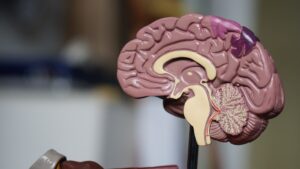Books on Brainspotting
- Brainspotting: The Revolutionary New Therapy for Rapid and Effective Change – by D. Grand
- This is Your Brain on Sports: Beating Blocks, Slumps and Performance Anxiety for Good! – by D. Grand and A. Goldberg

Brainspotting Websites, Articles, and Videos
- Dr. David Grand explains Brainspotting – a 23-minute video
- What is a Brainspot? – a 2-minute video
- Why Choose Brainspotting? – a 3-minute video
- Brainspotting Hypothesis – Dr. David Grand gives a comprehensive 43-minute presentation (with a parallel Spanish translation) and explains how and why Brainspotting works
- The central website for Brainspotting information – Brainspotting.com
- Two therapists show how Brainspotting therapy works for treating PTSD in a 4-minute video explanation
- An article about using Brainspotting to treat athletic problems – Podium Sports Journal – Brainspotting
Elaine Korngold is a a Certified Brainspotting Therapist and an Approved Consultant and would be happy to talk to you about Brainspotting.
